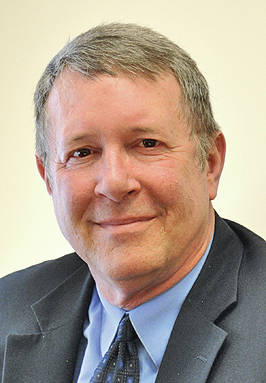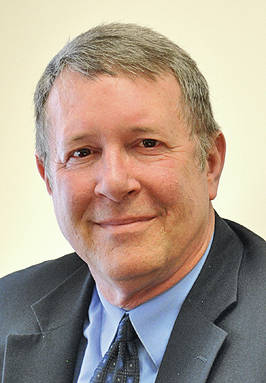

What’s clear in regard to the stalled $844,000 Rocky Fork Lake grant is that one day out of the blue, officials with the Bureau of Justice Assistance – the grant wing of the Department of Justice – actually read Highland County’s grant proposal and implementation plan. It’s reminiscent of Nancy Pelosi’s famous comment on the need to pass a bill now and read it later. In this case, it appears the feds approved the grant, and then decided to read the request.
Among the explanations provided Friday to The Times-Gazette from the BJA was that the grant was placed on hold “as a result of the Bureau of Justice Assistance grant manager’s discovery that key grants management responsibilities were being administered by a sub-recipient.”
That tidbit would have been “discovered” much, much earlier if the grant application and follow-up implementation plan had been read by federal officials with even the minimum level of attention you give to perusing the horoscopes in the daily paper.
Bottom line: Counties as small as Highland don’t seek a lot of grants outside of infrastructure assistance – roads, bridges, wastewater treatment plants – precisely because they don’t have the office staff necessary to manage and implement them. The result is that major grants end up going to big cities or counties that are staffed with grant writers, community enhancement offices, and even staff attorneys who are well-versed in the ins and outs of government grants and loans.
In October 2016, just before he left office, President Obama’s White House Rural Council identified this imbalance, and made recommendations in a memorandum to rectify it.
“Because of relatively limited public and philanthropic resources, many rural municipalities and community organizations lack the staff and resources needed to apply for or manage federal grants and programs,” the memo correctly stated.
The memo added, “What works for New York City and San Francisco may not work for Pikeville, Kentucky and Luna County, New Mexico.” Or Highland County, Ohio.
Among the findings and recommendations made in the memorandum:
• “Federal funding programs often include minimum funding amounts for each award due to workload concerns (minimum funding amounts may reduce the number of grants managed by a program office) or a general preference towards larger-scale projects. Yet high award minimums can unintentionally disadvantage rural communities, which often do not have the population base to demonstrate similar impact per dollars awarded as in urban areas, or lack the capacity to effectively manage large grants.”
• “Application requirements for competitive grant funding often unintentionally disadvantage rural communities. For example, scoring criteria often require support from nonprofit and/or philanthropic partners – institutions that are in shorter supply in rural areas.”
• “Without designated staff or program offices with the expertise to address rural-specific issues, rural stakeholders can find it difficult to navigate an agency’s programs. To address this issue, agencies should consider establishing offices or committees to coordinate resources for and engage with rural entities.”
• “As noted, rural communities may lack grant-writing expertise, disadvantaging them for reasons unrelated to their ability to successfully implement grant resources. Agencies should explore efforts to form partnerships and provide technical assistance and other resources to improve the ability of rural communities to compete for and access federal resources.”
• “Local leadership in rural communities may lack the time and experience to do the hard – but essential – work of developing a coordinated vision for their future. Federal agencies should support and incentivize efforts to convene stakeholders and provide planning assistance to rural communities, allowing them the time and space to create a vision for their community’s future.”
How much, if any, of this was implemented, especially with the change from Obama to Trump, is anyone’s guess. By the way, the White House Rural Council was comprised of the heads of almost every federal department and agency you can imagine, from Agriculture to Defense to HUD to Labor to HHS to Transportation, etc. The one notable absence? You got it – the Department of Justice.
Among the most frequent complaints locally about the lake grant was the lack of direction, assistance and responsiveness from the Bureau of Justice Assistance. Answers that were promised within 45 days never came at all. Phone calls weren’t returned. Emails were ignored. As the preacher said to the new sheriff in Blazing Saddles, “You’re on your own, son.”
The very lack of staffing in the county commissioners’ office is why organizations like the Turning Point Applied Learning Center and the Community Action Organization – both very experienced with federal grants – were brought on to help win and implement the grant. In a perfect example of a Catch-22, their involvement is now apparently one of the main complaints by the BJA.
In an interview a year ago about the details of the grant, LuAnn Winkle, then the Turning Point director who was set to serve as the lake site coordinator, said Community Action was perhaps the only local organization with the expertise to perform certain duties, and it was CAO’s involvement in the proposal that helped win the overall grant.
Some people complain about how much responsibility the commissioners have turned over to Community Action, and I share that concern. But the fact remains that our state and federal governments have empowered and funded Community Action agencies (who also get private donations), while simultaneously strangling local governments (cuts in the Local Government Fund, eliminating MCO sales taxes), resulting in CAOs having staffing levels and expertise that local governments lack, and therefore more responsibilities being sent their direction.
I’ll be very surprised if the Rocky Fork Lake grant happens at this point. After The Times-Gazette sent multiple inquiries last week, the BJA finally answered some questions, and agreed to meet with county commission President Shane Wilkin later this month. The problem is that Turning Point, the key grant administrator, had no choice but to essentially move on once the feds suspended the funding, so unless the BJA offers some manpower of its own, or backs off on some of its demands – neither scenario being likely – there’s little more the county can offer.
Reach Gary Abernathy at 937-393-3456 or follow on Twitter @AbernathyGary.


